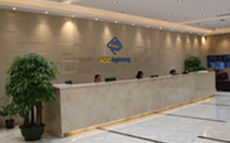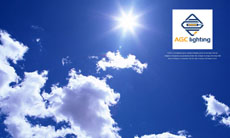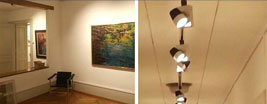LED heat problem and influence
First, the heat problem LED lighting and the impact of the presence of
1. LED lighting heat problems exist
In the use of LED lighting process, using the conventional way of lighting, the need to convert electrical energy into light energy. In these two methods, however, no one can be completely convert electrical energy into light, and only a minority portion of the electrical energy is converted into light energy, most of the remaining energy (60% to 70%) in the LED light, lighting converted into heat energy in the process. Especially for high-power LED devices and lighting it, with power increasing, the internal temperature of the LED chip will gradually rise, and LED chip and the performance of other devices will decrease as the temperature rises, even failure. Eventually led LED device does not work. Fundamentally, the junction temperature rise reduces the probability PN junction light-emitting compound. Performance in the light-emitting brightness is decreased, resulting in a saturation phenomenon. So the problem is heat LED development process problems to be solved.
2. The impact of the LED heat problem
In the above mentioned heat problems, heating problems not only affect the life of the LED devices, but also can affect the luminous intensity. Experience has shown, LED high power LED life especially depends on the chip junction temperature, the higher the temperature. The lower reliability, shorter working life. Therefore, not only from the LED materials, production methods, packaging, and other aspects of the structure and principles of integrated design-emitting LED devices, more important is to solve the existing devices and LED lighting in the heat problem, select the appropriate package and reasonable heat dissipation, and applied to the LED lighting.
Second, LED lighting technology status cooling
For LED lighting devices and limitations in the electrical energy into light energy aspects of the proposed cooling technology concept. LED lighting is designed to solve the cooling process, the removal of that part of the electrical energy into light energy, the impact of the energy into heat generated by the LED chip (making the chip performance degradation, aging or even failure).
1. The main factors affecting LED cooling
The main factors affecting the heat has material properties (thermal conductivity), package, packaging material, chip size, chip material, the current density on the chip. In general, LED lamp lighting device is composed of a chip and the circuit board, an external radiator and a driver of four parts. So now there are two thermal design options: one is to reduce the LED devices from electrical energy into heat energy, need to improve the implementation process within the internal quantum efficiency of LED devices, thereby improving the efficiency of the LED light, and then from the inside to solve LED lighting (use) produced during the heat problem; two faces starting from the outside design considerations, by changing the LED lighting devices and packaging material or package, in order to achieve the purpose of reducing the package thermal resistance, and sometimes you need to configure the appropriate heat sink to solve high junction temperature issue, thus achieving prolong the service life of LED devices.
2. The existing cooling mode
Due to limitations in technology, the current use of external heat sink design or use the method to change the LED lighting devices to solve the heat problem. Cooling LED lighting devices currently there are many, can be divided into package-level cooling mode and lighting level cooling. Package level cooling mode, as the name suggests, it is by optimizing the internal LED packaging structure and materials to achieve the effect of reducing the thermal resistance of the package, the package structure is divided into a silicon substrate flip chip (FCLED) structure, the metal structure of the board and the principle of merit-based selection and paste material substrate material based on material aspects.












































